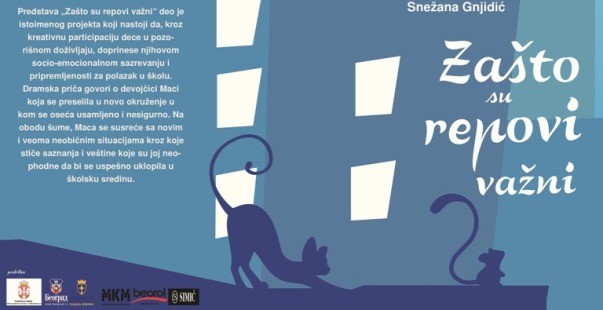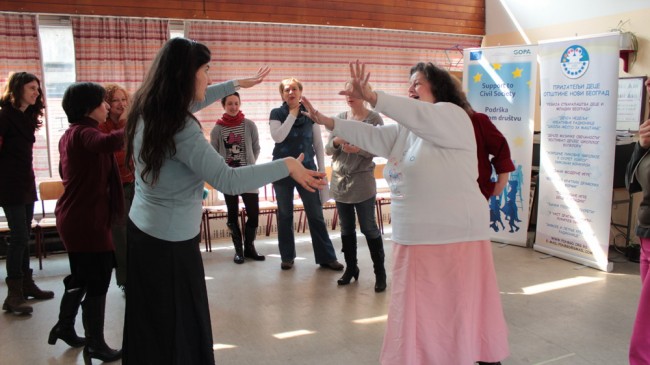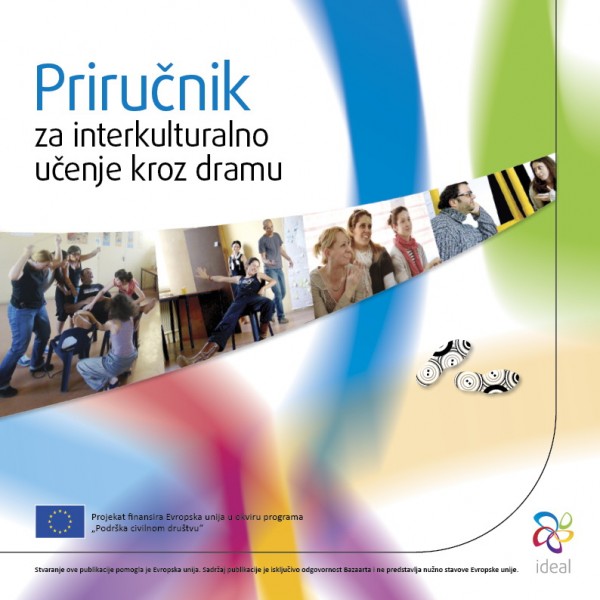1.4 Mit o Bledskom zvonu želja
Mit kao sudbina / Umetnička analiza – Blejski zvon-Bledsko zvono želja / Faza 2 / Preglej, Ljubljana
Druga faza projekta se je pričela maja 2006. V okviru druge faze so se udeleženci na podlagi spoznanj prve faze lotili dramatizacije mitskih materialov, upoštevajoč pojmovni krog dejstev in originalnih okoliščin, v katerih so mitološki elementi nastali.
Delo je potekalo v dveh oblikah:
- samostojno delo
- PreGlejev laboratorij
Produkt druge faze so surove dramatizacije, ki jih bodo udeleženci dalje razvijali na izobraževalni delavnici v Mostarju (Umetniške tehnike in pristopi – razvoj scenarija), avgustu 2006.
PreGlej / Mit o bledskom zvonu želja
Crkva na ostrvu u jezeru Bled
Bled je poznat po glečerskom jezeru koje čini njegovu glavnu turističku atrakciju. Na malom ostrvu usred jezera sagrađena je crkva, u čijem zvoniku posetioci ostrva često zvone za dobru sreću.
In the castle is living a young wife Poliksena, beautiful and kind, yet always beeing in worries for the safety of his husband. He is spending all his time in the forrest, chasing animals, and she knows and everybody knows he is having golden coins with him all the time. In the forest there are animals but bandits as well, and for them nothing is sacred. One day her premonitions become true – her husband is killed and thrown into the lake. Poliksena is mourning. Yet because she is deeply religious, she decides to order a bell for the church on the island. The bell will be made of gold and silver, in remembrance and glory to her husband. Patavious from Padova makes a bell. Yet when they put the bell on the boat, and the boat is on its way to the church, a terrible storm appears out of the blue sky and the boat, the bell and everyone who was on the boat sink on the bottom of the lake. Grievous widow who was observing from the window of her hall accepts her destiny, leaves her castle and goes to the monastery where before her death she finds her peace. After her death the pope himself donates to people living a Bled a new bell and he blesses it with the words: »The one who will ring with this bell and tell his wish to the mercyful lady from the lake, let his wish become truth!«
Naučna analiza
Historical material: There is very few written, historical material about the Bled Bell. It is known that the bell was made in 1534 in Padova, Italy by Franziskus Patavinus. In the documents of the Chatolic Church Bled is mentioned for the first time on 10th of April, when sovereign Saint Henrik the Second, gave the land into the property of Briksenšken Bishop Albuin.
Bled island was renovated in 2004 (when it was the thousands’ anniversary of Bled) and after the denacionalization it was given back to the church.
Following the legend, still present among the people, before the church was built, there was a temple consecrated to Živa, the Slavic goddess of love and fertility. Priest Staroslav and his daughter Bogomila were taking care of it. During the war between the catholic and pagan religions, the altar was destroyed and the church was build. Bogomila stayed with her father, took the catholic religion. Črtomir, who was once a leader of the pagan army, out of love for Bogomila accepted to be baptized and became a missionary between Slovenians
Literary sources: There are four slightly different written versions of the legend about the Bled bell (Polone Škrinjar »Slovenian’s myths and legends«): Ilumination of pious Shepar, Mountain fairies, Bled Bell and Stoned heart of an ingraceful son.
The legend about Črtomir and Bogomila is transformed into the epic poem ‘’Baptising at the Waterfall Slavica’’ by a famous Slovenian poet France Prešeren.
After the research Miomira made a first draft dramatization of the legend with which she was participating in the educational workshop in Mostar.
In the dramaturgical workshop in Mostar, where the participants from all seven partner’s organization were participating, we were analyzing the artistic structure of the myth, and came to the one of the possible conclusions about the creation of the legend, its meaning and function in the time when it was created.
Working process: We were analyzing the legend, using the techniques of analyzing dramaturgical structure of the legend:
A) NOSILEC DRAMSKE RADNJE (antagonist, protagonist) Protagonist in the legend is Poliksena. She represents feudal secular authority. Antagonist in the legend is Church (protiv radnja), represented by Pope who present’s God’s will on the earth.
B) TEMA: The love towards the human being
C) PREDMET SUKOBA: THE BELL
Public proclamation of the love towards another human being, through the symbol of that love, that is a bell; whose previous function was to proclaim the love to the God.
Swapping the function of the bell: In which glory the bell is made and by ringing it to whom you proclaim your love.
Interpretation: Unlike other groups’ mythic materials, this one was not analyzed directly by a scientist through scientific methods, but by artists, based on scientific facts and aparatuses, yet using artistic analysis.
Having in mind that the legend was created in mid 16th century; the legend maps the transition from Middle Ages into the Renesanse.
Poliksena’s decision/act to proclaim her love to her beloved husband instead to her God, is thus reflecting the transition into the renesanse and humanism, the beginning of the antropocentric culture. (the absolute love towards the god is threatened by the love towards another human being).
The current of the legend shows that this kind of action is sanctionised. The bell sinks.
Following the tipical dramaturgy of Christian myth about the traveling of one’s soul, Poliksena regrets her acts, withdraws in the monastery and by doing it she deserves and gets her peace by the end of her life.
In dramatical meaning (meaning of the dramaturgical analysis) the idea of tragic guilt confirms that the base of the myth is the conflict between the church and new world order, which through the emerging renesanse demands recognition.
To conclude: The myth is remembered because it talks about the big civilization shift, transition from Middle Ages into the Renesanse.


























